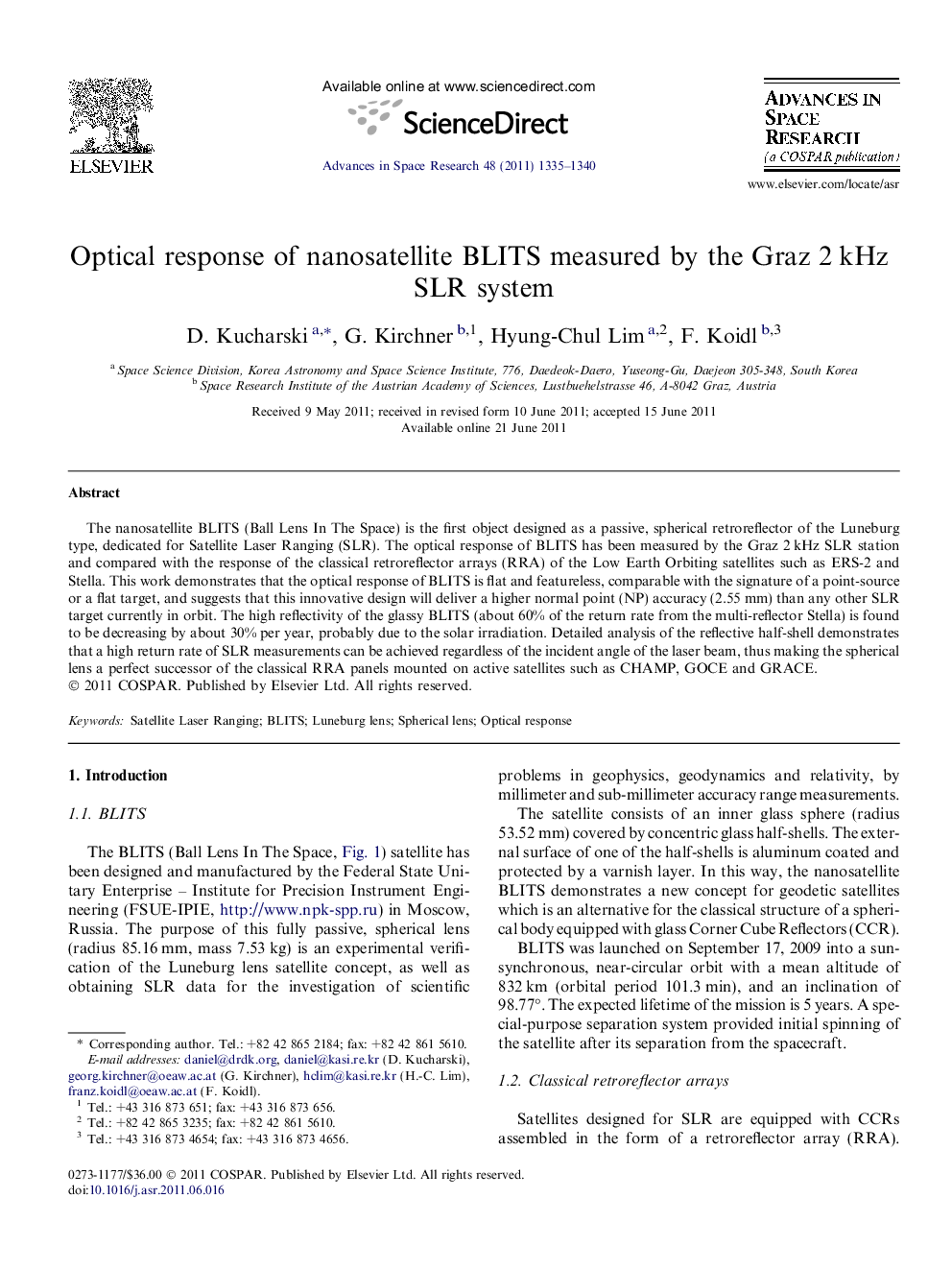| Article ID | Journal | Published Year | Pages | File Type |
|---|---|---|---|---|
| 1765744 | Advances in Space Research | 2011 | 6 Pages |
The nanosatellite BLITS (Ball Lens In The Space) is the first object designed as a passive, spherical retroreflector of the Luneburg type, dedicated for Satellite Laser Ranging (SLR). The optical response of BLITS has been measured by the Graz 2 kHz SLR station and compared with the response of the classical retroreflector arrays (RRA) of the Low Earth Orbiting satellites such as ERS-2 and Stella. This work demonstrates that the optical response of BLITS is flat and featureless, comparable with the signature of a point-source or a flat target, and suggests that this innovative design will deliver a higher normal point (NP) accuracy (2.55 mm) than any other SLR target currently in orbit. The high reflectivity of the glassy BLITS (about 60% of the return rate from the multi-reflector Stella) is found to be decreasing by about 30% per year, probably due to the solar irradiation. Detailed analysis of the reflective half-shell demonstrates that a high return rate of SLR measurements can be achieved regardless of the incident angle of the laser beam, thus making the spherical lens a perfect successor of the classical RRA panels mounted on active satellites such as CHAMP, GOCE and GRACE.
